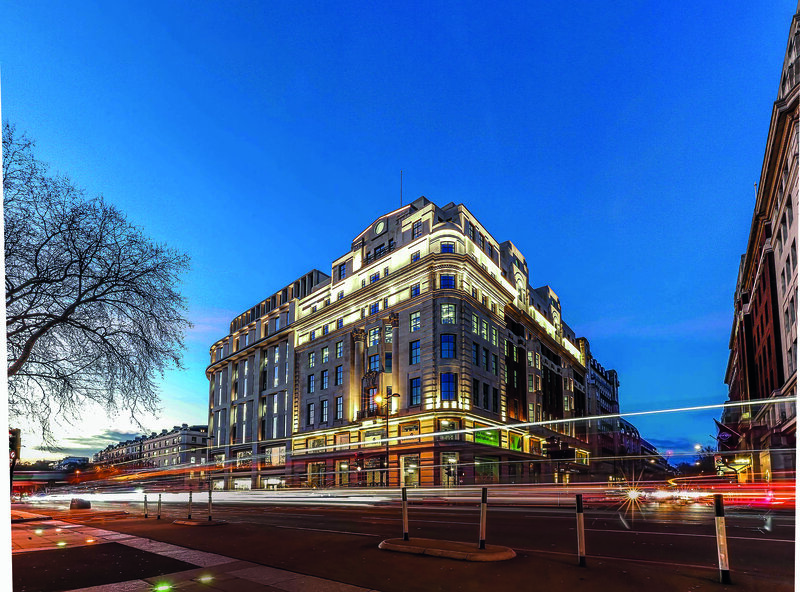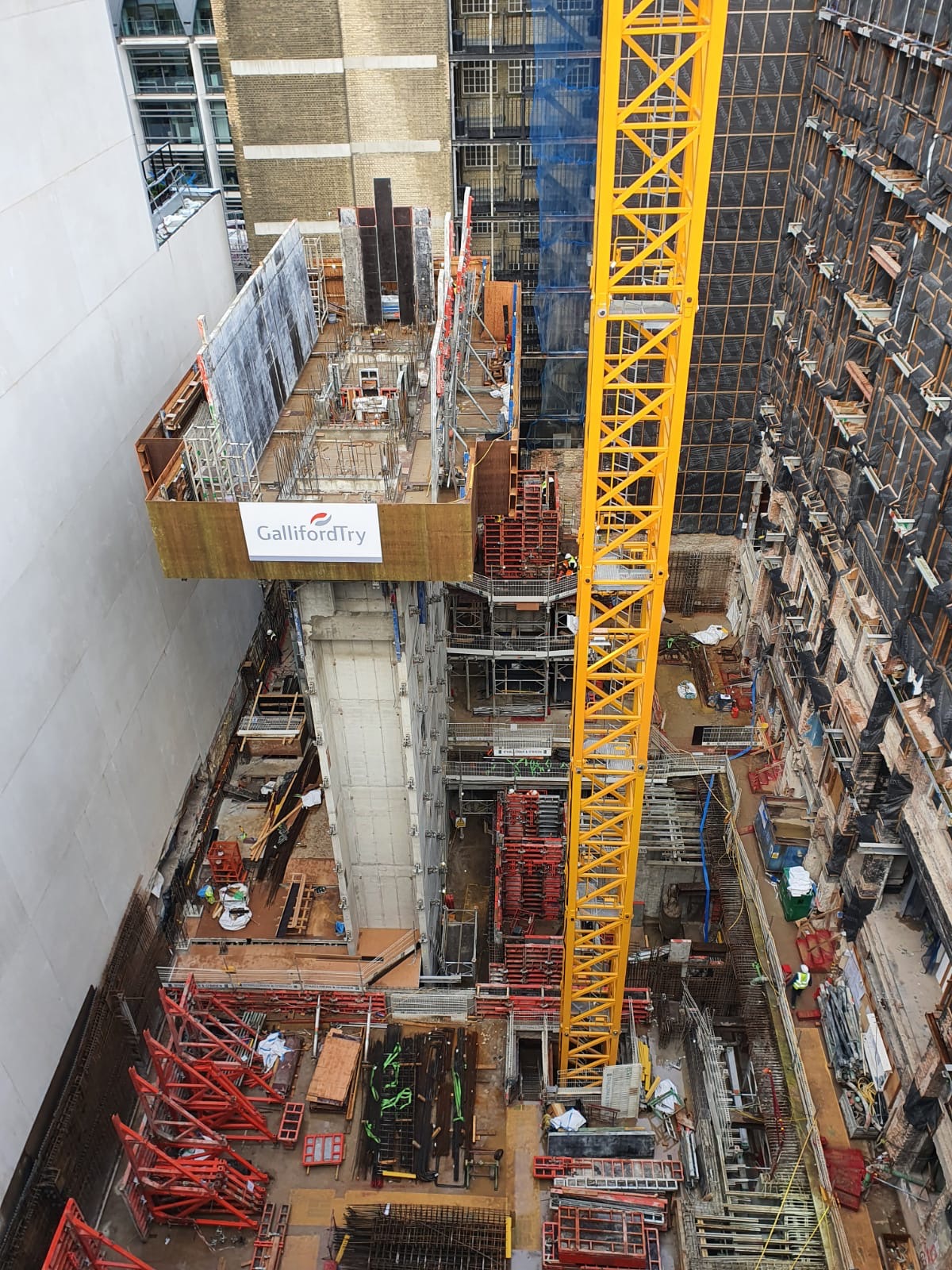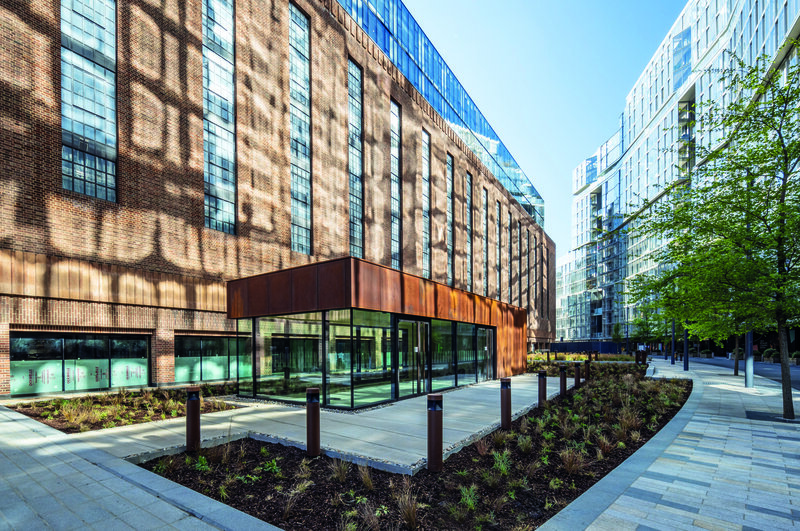
Galliford Try’s Barry Kingscote has won Construction Manager of the Year 2024 – and the Gold Award for the Commercial category – for his expert execution of a mixed-use development that interfaces old and new.

Commercial Gold: Barry Kingscote, Galliford Try
Project: 1-4 Marble Arch
Scope: Seven floors of new office
space and three floors of retail behind
a retained and rejuvenated facade
Client: The Portman Estate
Negotiated: Two-Stage Design & Build with Amendments
Form of contract: JCT 2016
Value: £64.8m
The almost pristine construction shots of 1-4 Marble Arch illustrate the success of this project: a complex development executed with impeccable technical and organisational skills in a busy central London location.
The project involved the retention of the 1920s art deco facades on the south and east elevation and the demolition of its insides, to be replaced with seven floors of offices and three levels of retail, now named One Great Cumberland Place and One Marble Arch respectively.
Other finalists
Tom Arkley MCIOB Willmott Dixon Interiors, Thomas Hardy House & Dugdale Arts Centre
Clinton Wright MCIOB Featherstone, Blick Rothenberg Office Refurbishment
Scott Young Willmott Dixon Interiors, ESB Level 28
This required construction of a second basement level for plant and cycle parking, erection of an eight-storey steel frame and installation of 500 stone-faced precast panels to complete the facades.
For our Construction Manager of the Year, Barry Kingscote, a chartered civil engineer, this project demonstrated his expertise in interface management, whether between the old and new structures, the complex temporary works and the permanent ones, the contractor at work on an adjoining scheme or the many specialist contractors.
According to Kingscote, his temporary works strategy was one of the elements that secured the winning tender for Galliford Try. He adopted the role of temporary works coordinator to oversee four specialist designers to tackle temporary works elements including the facade retention scheme, support during basement excavation, construction sequencing, party wall support and structural movement monitoring. Galliford Try’s bid proposed alternative solutions for several elements of the work, which aimed to reduce risks and provide cost and programme benefits.
These included: secant piling instead of sheet piling to form the new second level of basement; a buttress-piled temporary works solution in lieu of traditional props across the basement excavation; and an alternative temporary works design to support the diaphragm wall of Marble Arch Place, the adjoining construction site.
Kingscote had a strong track record with client The Portman Estate when he started work. He had project managed the £51m construction of 1-9 Seymour Street – then The Portman Estate’s largest project as a solo developer – between February 2016 and its completion in 2018.
There were, of course, surprises along the way – even with the £200,000 of investigation and opening up works instigated by Kingscote as a risk-reduction measure during the preconstruction phases. The form and variety of the existing building could only be properly assessed during demolition, leading to changes in temporary works details and connections.

Although the client owned the risks related to the retained facade, Kingscote’s approach was to treat them as his own, absorbing them into design development and keeping the project on track. This was a flagship development in a flagship location. Kingscote understood that the appearance of the site and the execution of the works were as crucial to the organisation’s brand as achieving a high-quality final product.

Commercial Silver Award: Joshua Waterman MCIOB, Integrated Project Delivery LLP
Project: Battersea Power Station – Phase Two
Scope: Restoration and redevelopment of Grade II*-listed former power station
Client: The Portman Estate
Form of contract: Construction Management
Value: £1.8m
Initially working on this iconic redevelopment for project manager Turner & Townsend, Joshua Waterman was quickly seconded to the client, Battersea Power Station Development Company, and was identified as the best person to lead on project controls. This role expanded to include managing the design team, reporting to shareholders and sequencing and programming of the works.

The vast project involved the restoration of the existing Grade II*-listed structure including the dismantling and rebuilding of all four of the former power station’s chimneys. The site was redeveloped into 254 apartments, over 100 retail units including cafes, bars and restaurants and 500,000 sq ft of office space.
As the youngest member of the small, seven-strong client team, Waterman made and influenced many decisions, from switching the form of procurement to construction management from design and build – as so many risks remained at that point – to changing construction methods and programmes, to masterminding the handover schedule.










